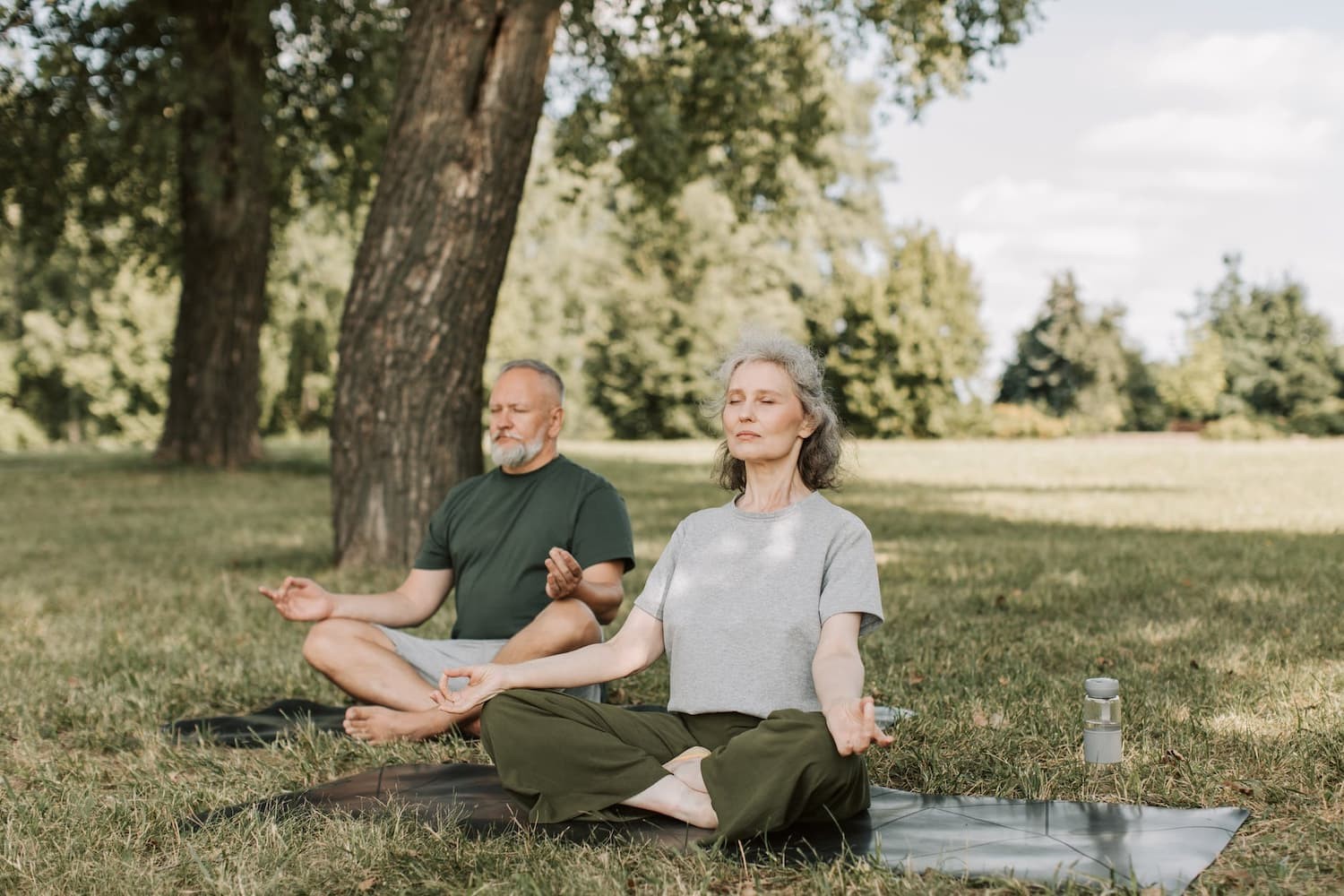
Yoga is a form of exercise that engages the physical, mental and spiritual bodies. The goal of yoga's physical postures is to transform the body and mind to improve overall health and quality of life. Regular yoga practice leads to a healthy weight, slows down the ageing process, and it improves respiratory function, among other things. It also helps with chronic conditions such as arthritis, asthma and diabetes.
There are many benefits that yoga for seniors can offer. It can deter any health condition related to ageing, such as joint pain, loss of balance, hearing loss and cognitive impairment. Furthermore, it prevents obesity by ensuring elderly people maintain a healthy body weight through daily physical activity. Explore the physical and mental health benefits of yoga for seniors in this guide, as well as the different types of yoga that can help you.
Health Benefits of Yoga for Seniors
Regular practice of yoga can help the elderly improve their physical health and cognitive performance. Being a spiritual practice as well as a physical exercise, it can assist senior citizens in their daily activities by improving their balance, range of motion, muscle strength and flexibility. Yoga's mental benefits include increasing focus, reducing stress and anxiety, promoting a feeling of calmness and serenity, improving self-awareness and personal growth.
Yoga also aids in the release of toxins from the body by allowing them to be eliminated through sweat. The elimination of toxins leads to an array of benefits, including:
- Lower blood pressure
- Quality sleep
- Increased lung capacity
- Reduced chronic pain
- Better balance and reduce risk of falls
- Reduced oxidative stress
Source: Home Care Assistance
Different Types of Yoga for Seniors
There are many forms of yoga that can be beneficial for seniors, particularly those with a physical condition like arthritis, heart disease, osteopenia or low bone density. Senior yoga classes that involve gentle yoga poses are suitable for older people and can be taken at yoga studios or online, depending on the individual's preference.
For elderly adults who are new to yoga or want to switch to a less intensive practice, the following styles of yoga have been proven to be beneficial:
Hatha yoga for seniors
Hatha yoga is a great way for seniors to stay flexible and build strength. This style of yoga has many different poses and focuses on breathing exercises to help with relaxation. A yoga instructor may suggest avoiding poses that require bearing all weight, such as the plow pose, to avoid injuring joints that have been weak from arthritis. Instead, they might guide their students through inverted poses which are less intense.
Iyengar yoga for seniors
Iyengar yoga is an approach to yoga that focuses on precision and alignment of the physical postures. It is widely used by older people as it promotes healing for various ailments such as arthritis, heart disease and high blood pressure. Every yoga pose in Iyengar yoga has numerous individual modifications and tools, including blankets, chairs, ropes and belts, which make this yoga practice more accessible and achievable for students of all fitness levels.
Kundalini yoga for seniors
When Yogi Bhajan brought Kundalini to the west, he said age should never be a limiting factor when practising this type of yoga. This particular form of yoga uses meditation, breathing exercises and yoga postures to create a holistic yoga experience. This type of yoga supports the respiratory system, reduces stress levels, promotes flexibility of the spine and reduces anxiety.
Restorative yoga for seniors
Restorative yoga is done lying down or sitting in a relaxed position. It involves deep breathing and meditation, which can help calm your mind and body. This type of yoga is designed to reduce stress, which will allow you to live an overall more fulfilling life.
Vinyasa yoga for seniors
Vinyasa yoga links body movements to your own breath pattern. This helps you become aware of how your breathing affects your body and mind while carrying out yoga poses. It encourages relaxation, which makes it a helpful practice for seniors who may be more prone to stress and hypertension. Vinyasa yoga is a fast-paced kind of yoga that is only recommended for elderly people who are physically active and used to intensive exercise routines.
Yoga instructors advise prospective yoga students to get medical advice before beginning their practice, especially if they have health issues or are using prescription medications. In general, most senior yoga classes are simple and doable.
In a typical yoga class for seniors, most yoga poses are done lying down – which puts no pressure on the back or other parts of your body. Gentle stretches and exercises are designed for people with a limited range of motion. Seniors who are new to yoga should start slowly, doing only 5 or 10 minutes at first, then working their way up to 15 minutes per session over several weeks.
Here are a few pointers to get you started in a gentle yoga class:
- Wear loose-fitting clothes
- Minimise caffeine intake before yoga practice
- Avoid eating a heavy meal right before class since it can increase acidity in the stomach, which may lower blood pressure too much during standing poses
- Avoid doing yoga in hot, humid conditions since heat can increase the risk of heat-related illness or injury during yoga practice









